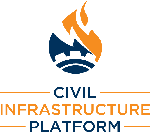This is an old revision of the document!
Table of Contents
Civil Infrastructure Platform

The Civil Infrastructure Platform (CIP) aims to establish a “base layer” of industrial-grade tooling using the Linux kernel and other open source projects. This base layer will be available for use by developers creating software building blocks that meet safety, security, reliability and other requirements that are critical to industrial and civil infrastructure projects.
Participate in CIP
CIP is an open, collaborative project where you are welcome to contribute. Please join us:
- Register in our public mailing list, cip-dev where the technical discussions take place.
- Join our IRC channel in irc.freenode.org #cip
- Join any of our projects:
- In general we use Gitlab but depending on the project, we try to stay as close to upstream as possible and using the tools maintainers use is part of that strategy so in every case we might use different tools.
The CIP Project uses the Linux Foundation Developer Certificate of Origin (DCP). Contributors to the CIP Project should adhere to the Linux Foundation's DCP and include a sign-off in their contributions.
You can follow our progress and news by visiting our website.
CIP activities
Kernel maintainership
The first action taken by the CIP project is to select and maintain Linux kernels for a very long time (+10 years). To achieve this goal we have a group of experts. All the actions and decisions related to the maintenance of the Linux kernels selected by the CIP project are available at CIP Kernel maintenance.
Testing
Civil infrastructure industry has high stability, reliability and security standards in order to ensure safety-critical systems. A working group has been created to address this reality.
So far CIP have created B@D - This is a virtual machine that allows developers to easily run automated testing on a local Beaglebone Black or Renesas RZ/G1M iwg20m platform. Further information can be found here.
The next goal for CIP is to centralise testing, so that developers can run tests without having local access to a platform. This work is explained further in the Centralised Testing wiki page.
CIP Core project
The CIP Core project aims to create reference minimal file system images that allow testing the CIP Core packages: a set of industrial-grade components that require super long-term maintenance. For more information, go to the CIP Core wiki page, follow the quickstart or check out the source code.
CIP Software Updates
Spending efforts to maintain a kernel and operating system base layer makes little sense unless you have a software update mechanism in place. However, updating software is not an easy task. For example, random power outages can severely interfere with an update. Besides, update software can have bugs just like any other software. The CIP Software Update Working Group has been born to fill that gap by providing a robust software update mechanism suitable to the industrial-grade open source base layer.
For more information, go to the CIP Software Updates wiki page.
CIP Security working group
In order to deal with evolving cyber attacks, the CIP Security working group is working to support the adoption of IEC 62443 across the entire industry and are working to roll out solution as soon as possible as part of an all out effort to support users’ effort to acquire certification.
As the first step, we are working to solve issues for certification using capabilities of component packages and some guidelines to make industry secure by actively supporting suppliers of industrial products so that they can certify using the IEC 62443-4-2 standard.
For more information, go to the CIP Security working group wiki page.
About the IEC 62443-4 series, go to the past investigation on IEC62443-4 page.
Reference Hardware
The CIP project has selected a few hardware platforms as reference platforms for testing the project's software. More information avaialund in the CIP Reference Hardware wiki page.
Other activities
CIP group is developing other actions:
- CIP group participates in several events around the world to promote the use cases that justify the existence of the group and the activities executed and planned.
- You can follow closely the activities that the CIP developers are doing through its project journal. Before using it, please check the journal ground rules.
Resources
-
- Latest news from CIP.
- FAQ.
- Mailing List
Logo and name Usage
Use of the names and logos for “CIP” / “Civil Infrastructure Platform” and other LF projects (i.e. Real-Time Linux) is acceptable to describe those projects and your involvement in them, as long as your manner of usage complies with the LF's Trademark Usage Guidelines (available at https://www.linuxfoundation.org/trademark-usage/). Although you will likely want to consult with your trademark legal counsel for legal advice regarding the Usage Guidelines, here are a couple, in particular, we would highlight:
- Please make sure to use the appropriate symbol (™ or ®) for the first and/or most prominent usage of the marks on a website or in other materials. As you'll see on the Trademark Usage Guidelines page, for the CIP and Linux Foundation, ™ is currently the correct symbol to use.
- Please make sure to include appropriate attribution notices regarding the LF's ownership of the marks, when you're using the marks on a website or in other materials. Here is a sample attribution notice: “CIP, Civil Infrastructure Platform and Real-Time Linux, and their respective logos are trademarks of The Linux Foundation. Linux is a registered trademark of Linus Torvalds.”
- Use is acceptable as long as it's an accurate description of the product. Put another way, as long as what they're describing as a CIP implementation is CIP software.
- Use is NOT acceptable if a company is stating, or implying, that CIP is a mark of an org besides the LF. For example, entities should ensure that their product names and logos are larger than CIP/LF – CIP should not be the most prominent name or logo on their materials.

